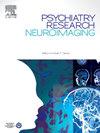精神分裂症严重程度的多模态预测建模:利用随机森林和支持向量机的肝功能指标和认知评分
IF 2.1
4区 医学
Q3 CLINICAL NEUROLOGY
引用次数: 0
摘要
精神分裂症是一种复杂的神经精神疾病,伴有认知缺陷和全身生理障碍,包括通过肠-肝-脑轴与肝功能障碍的联系。尽管有越来越多的证据,肝功能生物标志物与精神分裂症严重程度预测模型的整合在很大程度上仍未被探索。本研究提出了一个多模式机器学习框架,结合肝脏指标-丙氨酸转氨酶(ALT),天冬氨酸转氨酶(AST),胆红素,白蛋白和国际标准化比率(INR) -与认知评估评分,以加强严重程度预测。使用MATLAB R2023a编程生成500例患者资料的合成数据集,模拟人口统计学和生物标志物分布的现实临床变异性。引入控制缺失度,采用移动均值法进行输入,然后采用最小-最大归一化方法对特征进行标准化。开发了两种机器学习模型:用于连续严重性回归的随机森林模型和用于多类分类的带有纠错输出码(ECOC)和径向基函数(RBF)核的支持向量机模型。随机森林回归器的RMSE为21.85,平均绝对误差为17.26,R²为0.70,捕获了72%的方差。SVM分类器的准确率达到86.4%,宏观平均精度、召回率和f1得分为0.86,AUC为0.91。特征重要性分析显示,认知评分、ALT和AST是主要的预测因子。残差分析和混淆矩阵分析进一步证实了模型的可靠性。这种综合方法证明了利用肝脏生物标志物和认知评分进行精神分裂症严重程度评估的技术可行性和临床相关性,为复杂的精神病学评估提供了一种可靠的数据驱动方法。本文章由计算机程序翻译,如有差异,请以英文原文为准。
Multi-modal predictive modeling of schizophrenia severity: Leveraging liver function indicators and cognitive scores with random forest and SVM
Schizophrenia is a complex neuropsychiatric disorder with cognitive deficits and systemic physiological disturbances, including emerging links to hepatic dysfunction via the gut-liver-brain axis. Despite growing evidence, the integration of liver function biomarkers into predictive models for schizophrenia severity remains largely unexplored. This study proposes a multimodal machine learning framework combining hepatic indicators—Alanine Aminotransferase (ALT), Aspartate Aminotransferase (AST), Bilirubin, Albumin, and International Normalized Ratio (INR)—with cognitive assessment scores to enhance severity prediction. A synthetic dataset of 500 patient profiles was programmatically generated using MATLAB R2023a, simulating realistic clinical variability across demographics and biomarker distributions. Controlled missingness was introduced and imputed using moving mean methods, followed by Min-Max normalization to standardize features. Two machine learning models were developed: Random Forest for continuous severity regression and Support Vector Machine (SVM) with Error-Correcting Output Codes (ECOC) and Radial Basis Function (RBF) kernel for multiclass classification. The Random Forest regressor achieved an RMSE of 21.85, Mean Absolute Error of 17.26, and an R² of 0.70, capturing 72 % of variance. The SVM classifier attained 86.4 % accuracy, with macro-averaged precision, recall, and F1-score of 0.86, and an AUC of 0.91. Feature importance analysis revealed cognitive score, ALT, and AST as dominant predictors. Residual and confusion matrix analyses further confirmed model reliability. This integrative approach demonstrates the technical feasibility and clinical relevance of leveraging hepatic biomarkers alongside cognitive scores for schizophrenia severity assessment, offering a robust data-driven methodology for complex psychiatric evaluation.
求助全文
通过发布文献求助,成功后即可免费获取论文全文。
去求助
来源期刊
CiteScore
3.80
自引率
0.00%
发文量
86
审稿时长
22.5 weeks
期刊介绍:
The Neuroimaging section of Psychiatry Research publishes manuscripts on positron emission tomography, magnetic resonance imaging, computerized electroencephalographic topography, regional cerebral blood flow, computed tomography, magnetoencephalography, autoradiography, post-mortem regional analyses, and other imaging techniques. Reports concerning results in psychiatric disorders, dementias, and the effects of behaviorial tasks and pharmacological treatments are featured. We also invite manuscripts on the methods of obtaining images and computer processing of the images themselves. Selected case reports are also published.

 求助内容:
求助内容: 应助结果提醒方式:
应助结果提醒方式:


